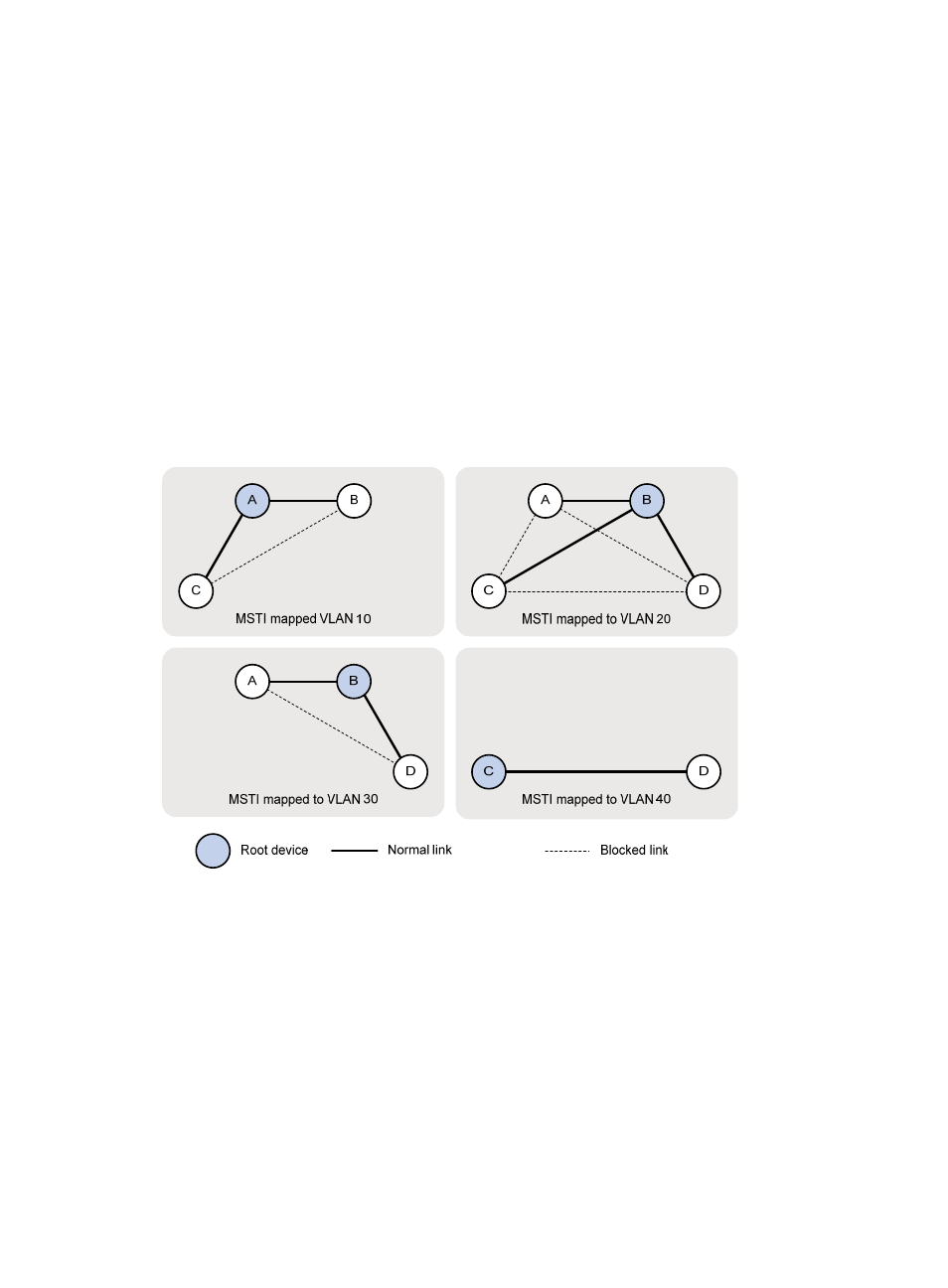Pvst configuration example, Network requirements – H3C Technologies H3C S10500 Series Switches User Manual
Page 113

102
0 GigabitEthernet1/0/3 DESI FORWARDING NONE
1 GigabitEthernet1/0/1 ROOT FORWARDING NONE
1 GigabitEthernet1/0/2 ALTE DISCARDING NONE
4 GigabitEthernet1/0/3 DESI FORWARDING NONE
# Display brief spanning tree information on Device D.
[DeviceD] display stp brief
MSTID Port Role STP State Protection
0 GigabitEthernet1/0/1 ROOT FORWARDING NONE
0 GigabitEthernet1/0/2 ALTE DISCARDING NONE
0 GigabitEthernet1/0/3 ALTE DISCARDING NONE
3 GigabitEthernet1/0/1 ROOT FORWARDING NONE
3 GigabitEthernet1/0/2 ALTE DISCARDING NONE
4 GigabitEthernet1/0/3 ROOT FORWARDING NONE
Based on the output, you can draw the MSTI mapped to each VLAN, as shown in
.
Figure 28 MSTIs mapped to different VLANs
PVST configuration example
Network requirements
As shown in
:
•
Device A and Device B work at the distribution layer. Device C and Device D work at the access
layer.
•
Configure PVST so that packets of different VLANs are forwarded along different spanning trees.
•
VLAN 10, VLAN 20, and VLAN 30 are terminated on the distribution layer devices, and VLAN 40
is terminated on the access layer devices. The root bridge of VLAN 10 and VLAN 20 is Device A,
that of VLAN 30 is Device B, and that of VLAN 40 is Device C.